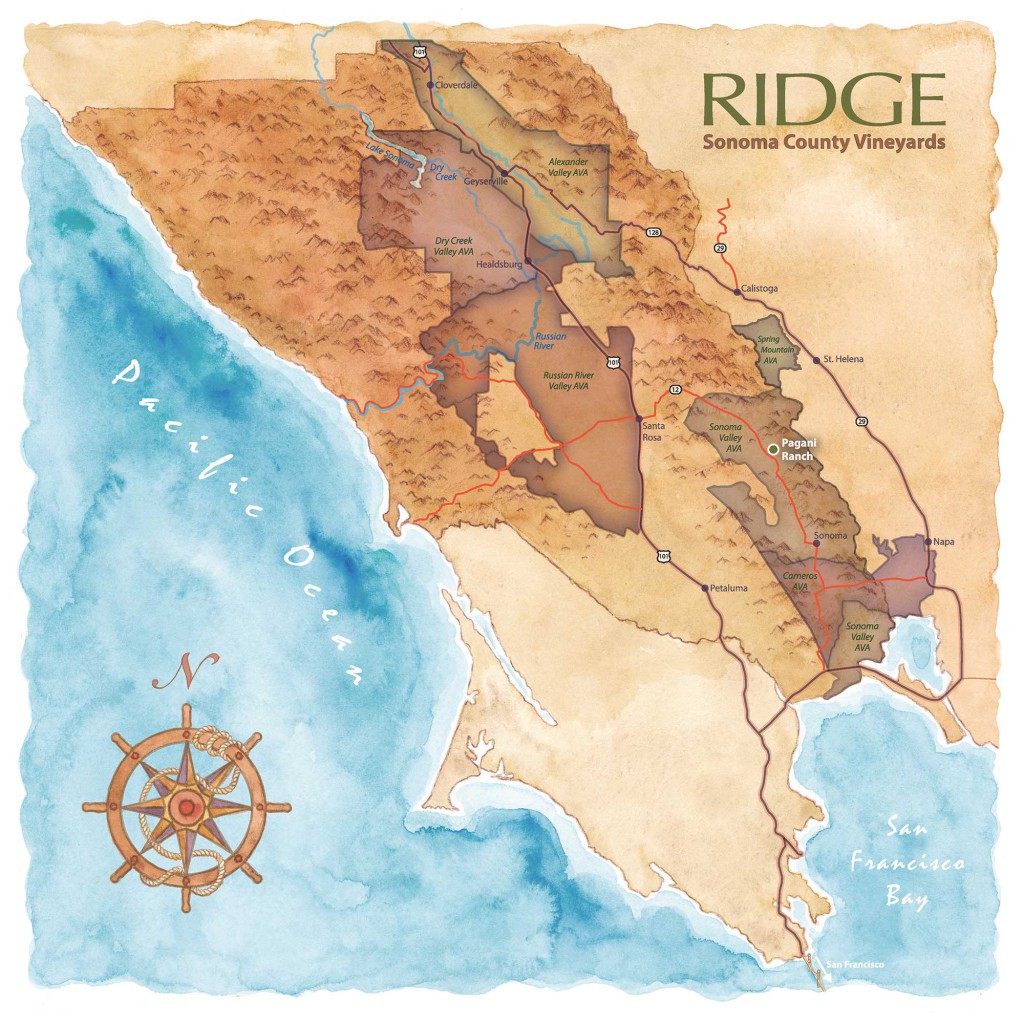Sonoma Valley AVA
Blog Post
American Viticulture Areas (AVAs) are defined as agricultural regions that have distinct climate or geographic features that impact the way grapes are grown. There are 267 AVAs in the United States, and more than half (147) are in California.
At Ridge Vineyards, our winemaking style is dedicated to highlighting specific patches of ground. An AVA’s climate, soil types, and topography impart unique attributes and directly contribute to a wine’s character. Here, we explore the ways that characteristics of the Sonoma Valley AVA are expressed in our wines.
Sonoma Valley Climate & Geography
The Sonoma Valley AVA is a warm and sunny growing region during the spring and summer months, but variations in elevation and cooled airflows, from both the Petaluma gap to the west and the Santa Rosa Plain to the northwest, create a broad range of growing conditions throughout the region.
Characteristics of Sonoma Valley Wines
Ridge has been sourcing grapes from the Pagani Ranch from the Sonoma Valley AVA since 1991. These old bush vines were planted in the late 19th century to Zinfandel, with small amounts Petite Sirah and Alicante Bouschet mixed throughout. The vines lay on the valley floor at low elevation where the cooling fog from the west and northwest will pool into the area and remain well into the afternoon. Because of this the grapes from Pagani Ranch ripen very slowly and are always the last to be harvested. That unusually slow ripening results in wines with rich deep dark bramble, plum, and boysenberry flavors while maintaining brisk acidity. The Pagani Ranch Zinfandel is both bold and balanced in equal measure.
Wait!
In order to qualify for user related discounts, you must log in before proceeding with checkout. Click the button below to log in and receive these benefits, or close the window to continue.
Log In